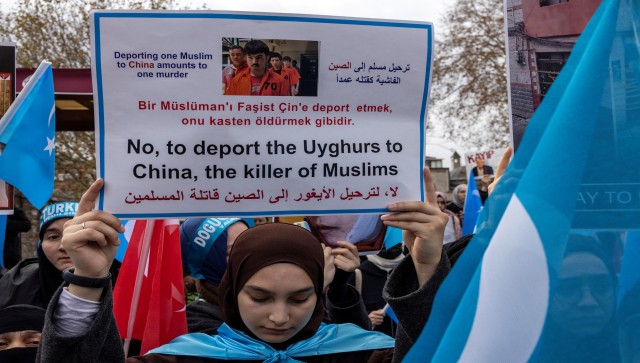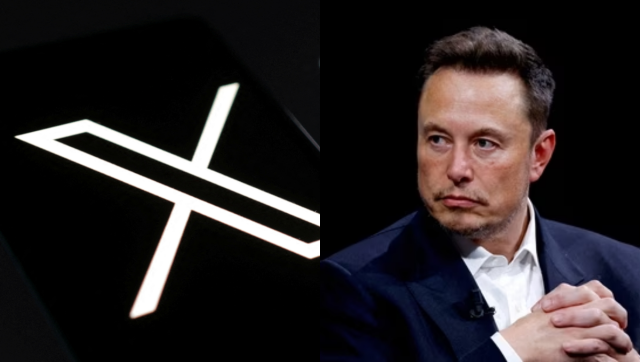Predictably, the Congress party has questioned the way in which the National Investigating Agency (whose Director was appointed during the UPA regime) has dropped charges against Sadhvi Pragya Thakur and recommended the non-use of the stringent Maharashtra Control of Organised Crime Act (MCOCA) against Lt Col Prasad Shrikant Purohit. But the fact remains that it has been more than seven years since Purohit and Sadhvi have been incarcerated in prison without chargesheets. And what is more important to note is that if the NIA did finally prepare the charge-sheet on 13 May, it was after the Supreme Court of India had questioned the very basis of continued detention of Purohit and Pragya under the MCOCA, as they had no criminal record. The apex court had also observed that there was “considerable doubt” about their involvement in Malegaon blasts. In fact, the Supreme Court had directed that their bail plea should be examined by a special trial court.
It is also worth noting that on its part, the Indian Army had conducted its Court of Inquiry and some 50 witnesses, officers and men had given their testimony in favour of Purohit. They had hailed Purohit as a dedicated professional who had infiltrated into organisations like SIMI and the Indian Mujahideen and some right-wing outfits like Abhinav Bharat, “with full knowledge and concurrence of his seniors.”
The Malegaon bombings were a series of bomb blasts that took place on 8 September, 2006. The Maharashtra police initially suspected Bajrang Dal, the Lashkar-e-Toiba or the Jaish-e-Mohammed of involvement in the attacks. Investigators then said that the explosives contained in these bombings were “a cocktail of RDX, ammonium nitrate and fuel oil — the same mixture used in 7/11”, referring to the 11 July 2006 Mumbai train bombings. In fact, on that basis, the Anti Terrorist Squad (ATS) of Maharashtra prima facie ruled out the involvement of Hindu Nationalist groups like the Bajrang Dal in the Malegaon blasts; it cited two reasons: one, RDX is only available to Islamist outfits; two, Bajrang Dal activists so far had only used crude bombs, nothing as sophisticated as the ones in Malegaon. Accordingly, the Police arrested members of the Students Islamic Movement of India and their promoters. In fact, on 28 November, 2006, the Mumbai police stated that two Pakistani nationals were involved in the explosions. “We have successfully detected the Malegaon blasts case. We are, however, on the lookout for eight more suspects in the case,” said DGP PS Pasricha.
However, the contours of the investigation by the ATS underwent radical changes once Hemant Karkare succeeded KP Raghuvanshi as its chief in January 2008 (eventually he was succeeded by Raghuvanshi after he was killed during the attack in Mumbai on 26 November, 2008). It is an open secret that Karkare had excellent relations with senior Congress leaders, particularly Digvijay Singh. Karkare started the process of highlighting “saffron terror” with the arrest of Purohit and Sadhvi.
I do not want to go into details, as in these pages I have written earlier that the theory of “saffron terror” was popularised by the UPA regime to neutralise the adverse impacts of the 26/11 tragedy, particularly during the electioneering for the 2009 general elections. This strategy went into full swing soon after the Congress party won the 2009 general elections and the assembly elections in Rajasthan and Haryana. At the time, not only at the Centre but also in Rajasthan, Haryana, Andhra Pradesh and Maharashtra there were Congress governments. “Re-investigations” of the blasts in Samjhauta Express, Malegaon, Ajmer Sharif and Mecca Masjid (Hyderabad) were reopened simultaneously to implicate “Hindu fundamentalists”.
After seven years, it is becoming increasingly difficult to legally prove the charges of “saffron terror”. That explains why the NIA is reconsidering its previous positions. And that explains why the Congress is getting upset. In fact, the so-called saffron terror is the third major issue raised by the Congress against its opponents that like the other two – Tehelka Scandal and Coffin Gate – has been a case of more sound but less substance. The Coffin scam was a result of the faulty approach adopted by the Comptroller and Auditor General of India’s (CAG) report which alleged corruptions in the purchase of coffins for the dead soldiers during the Kargil war that took place in 1999 between India and Pakistan.
According to the CAG, the Vajpayee government incurred a heavy loss of 1, 87,000 US dollars in the entire transaction. I have always argued that the CAG is prone to make blunders when it deals with military matters – for instance, once it said that the Indian Air Force was wasting money by buying fighter planes from abroad at a much higher price than what the country’s Defence Research and Development Organisations (DRDO) could spend for making these planes at home. Nothing could be more perverse than this logic, but then the CAG has made similar observations about the Indian Navy and Army as well. In this specific case, the caskets were purchased from Buitron and Baiza, a company based in United States of America, rendering funeral services.
The Vajpayee government had bought 500 caskets worth $2500 each, which the CAG presumed to be 13 times the original amount. However, the Ambassadors from both the countries–India and the US–had declared in writing that those caskets had a cost worth $ 2,768 each. But, when the issue was made a scam, the Central Bureau of Investigation (CBI) investigated the case and filed a chargesheet against three Indian Army officers in August 2009. However, in December 2013, a special CBI court found no evidence and discharged all the accused. The case was closed. And this happened during the UPA regime itself.
The Tehelka scam has been the most ludicrous in India’s history of scandals. A highly partisan and controversial journalist, claiming to be the representative of a non-existent defence firm, traps some officials in the name of procuring a non-existent weapon system and then generalizes that the then defence minister George Fernades and his staff are indulging in corruption, indicating that the proposed deal to buy Barak missiles for the Navy from Israel is one such incident that had witnessed kickbacks. In fact, such heat was generated in the process that the Congress party made the life of the then Vajpayee government miserable and boycotted Fernandes in Parliament. They, along with the partisan journalists, boycotted two commissions of inquiry that the Vajpayee government set up under two respected retired Supreme Court judges – Justice S N Phukan and Justice Venkataswami. So much so that to a great extent the Congress under Sonia Gandhi won the elections in 2004 on the basis of the two scandals of Coffin-gate and Tehelka by successfully building the public perception over misleading and fabricated evidences against the government of the day.
When the Congress-led UPA came to power in 2004, the two judicial commissions were dismissed by the government and everything was handed over for investigations to the CBI, which, in turn, filed a First Information Report (FIR) on 10 October, 2006. But again, nothing concrete emerged. On 24 December, 2013, after investigating for more than seven years, the CBI decided to close the matter as it did not find any evidence on the allegations. And the UPA government was very much there then.
Viewed thus, one is sure that even if the UPA were in power today, the NIA would not have acted differently.


)




)
)
)
)
)
)
)
)